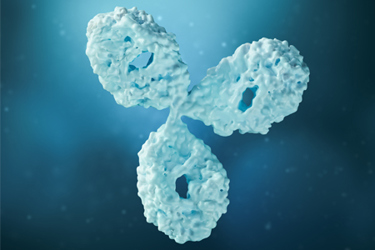In Vitro Characterization Of A Dual Antagonistic Anti-LILRB2/LILRB4 Monoclonal Antibody

Myeloid-derived suppressor cells (MDSCs) within the tumor microenvironment present a promising target for immune checkpoint cancer therapy. However, MDSC-targeted therapies have yet to demonstrate significant survival benefits. Leukocyte immunoglobulin-like receptor B2 (LILRB2), a member of the LILR family, is predominantly expressed on myeloid lineage cells, including monocytes, macrophages, and dendritic cells. As a negative regulator of myeloid cells and an immune checkpoint receptor, LILRB2 represents a potential immunotherapeutic target.
To explore this avenue, we generated monoclonal antibodies (mAbs) against LILRB2 using PentaMice® strains, which encompass five wild-type mouse strains with nine MHC class II haplotypes to maximize antibody diversity. Following immunization with human LILRB2, lymphocytes were fused with a myeloma partner to generate hybridomas, leading to the production of 24 purified anti-LILRB2 mAbs. These mAbs were characterized using arrayed surface plasmon resonance (SPR) via the Carterra® LSA® instrument to classify epitope bins. In silico humanization was then performed to optimize "humanness" scores using Curia’s T20 algorithm, followed by transient expression in Curia’s TunaCHO™ platform for functional evaluation.
Flow cytometry (FACS) analysis of HEK293 cells expressing human LILRB2 or LILRB4 revealed that hu4-O19A-IgG4 specifically bound LILRB2, while hu6-I11A-IgG4 exhibited dual specificity for both LILRB2 and LILRB4. Binding affinity assays demonstrated an EC50 of 11.9 nM and KD of 1.5 nM for hu4-O19A-IgG4, whereas hu6-I11A-IgG4 exhibited higher affinity (EC50 of 3.2 nM and KD of 0.6 nM). Functional assays in co-cultures of human MDSCs and T cells revealed that both antibodies reversed MDSC-mediated cytokine suppression, increasing GM-CSF, IL-10, TNFα, and IL-6, while suppressing IL-13. Notably, hu6-I11A-IgG4 displayed greater antagonist activity than hu4-O19A-IgG4.
These findings highlight the potential of anti-LILRB2/LILRB4 mAbs as novel immunotherapeutic agents, particularly in combination with PD-1 blockade. The discovery of a dual LILRB2/LILRB4 antagonist opens new avenues for targeting MDSCs in cancer immunotherapy, offering a promising strategy for enhancing antitumor immune responses.
Get unlimited access to:
Enter your credentials below to log in. Not yet a member of Bioprocess Online? Subscribe today.
